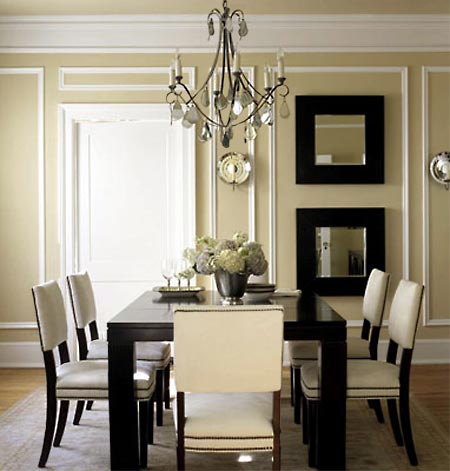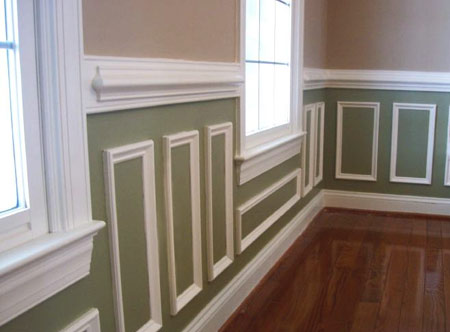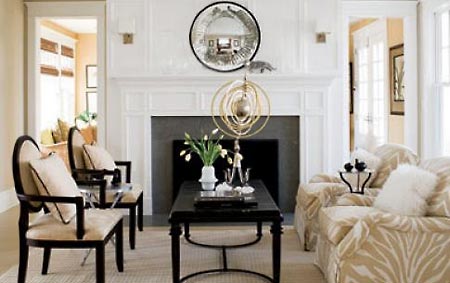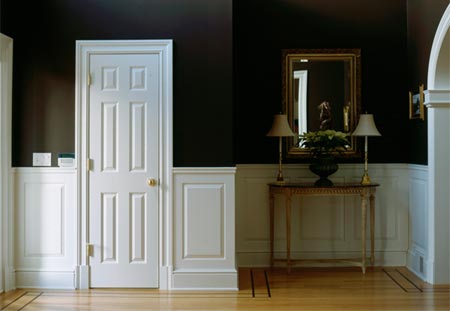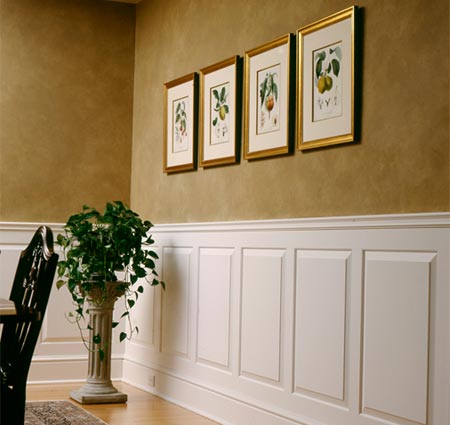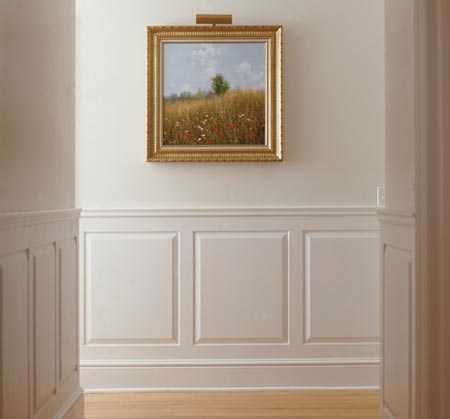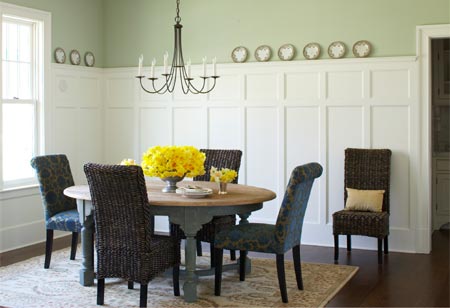A Traditional Home
When decorating a traditional home where the emphasis is on creating a classic look, combine a muted decorating scheme with elements that transform rooms from plain to downright interesting.
Although wood is the common (and traditional) wainscoting material, there are additional options available. While wood has a classic, organic beauty, other wainscoting materials may prove to be more durable or better compliment the interior design of your home.
Applying moulding and trim painted in a white to walls to create a classic look. A chair or dado rail sited halfway up a wall - with bottom and top wall section painted in muted tones - and trim frames on the bottom section adds architectural features that are normally incorporated into a traditional home. Installing trim and panels is fairly easy to do yourself with the right tools and materials.
You will need:
Compound Mitre saw, mitre saw or mitre box and backsaw - Trim and moulding strips in various styles - you will find quite a wide selection at your local Builders Warehouse - Pattex No More Nails
Raised panels can be made by using sheets of SupaWood and a router for detailing a raised panel effect.
SupaWood comes in 3, 6, 9 and 12mm thicknesses. It's easy to have everything cut to the right size and glue together the boards to create raised panels. The panels are installed between the skirting and chair rail.
In a room with low ceilings, tall wainscot on the walls creates the illusion of height, vis-a-vis; horizontal panelling would make a narrow room see wider and more spacious.
Finish off moulding and trim with satin or sheen paint or clear polyurethane finish and you can easily clean with a sponge and soapy water.

